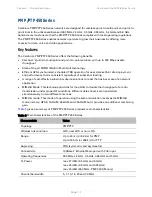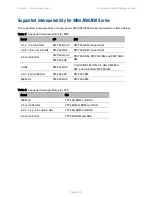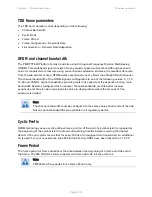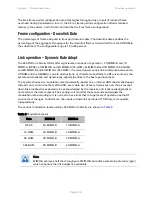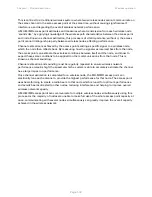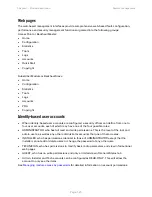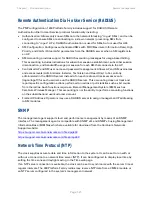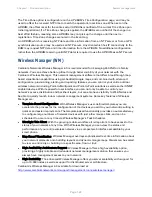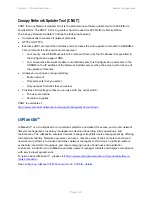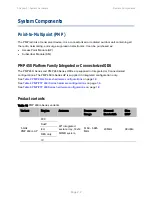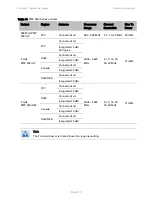
Chapter 1: Product description Wireless
operation
Page 1-17
Encryption
The 450 Platform Family supports optional encryption for data transmitted over the wireless link.
The 450 Platform Family supports the following forms of encryption for security of the wireless
link:
DES (Data Encryption Standard): An over-the-air link encryption option that uses secret 56-bit
keys and 8 parity bits. DES performs a series of bit permutations, substitutions, and
recombination operations on blocks of data. DES encryption does not affect the performance
or throughput of the system.
AES (Advanced Encryption Standard): An over-the-air link encryption option that uses the
Rijndael algorithm and 128-bit keys and 256-bit key size to establish a higher level of security
than DES. AES products are certified as compliant with the Federal Information Processing
Standards (FIPS 197) in the U.S.A.
The default setting on an AP is "Disabled".
MIMO
Multiple-Input Multiple-Output (MIMO) techniques provide protection against fading and increase
the probability that the receiver decodes a usable signal. When the effects of MIMO are combined
with those of OFDM techniques and a high link budget, there is a high probability of a robust
connection over a non-line-of-sight path.
The sub-features that comprises the MIMO techniques utilized in the 450 Platform Family ODUs
are:
MIMO-A: This technique enables 450 Platform Family radio to use a scheme that optimizes
coverage by transmitting the same data over both antennas. This redundancy improves the
signal to noise ratio at the receiver making it more robust.
MIMO-B: This technique provides for the ability to double the throughput of a radio
transmission under proper RF conditions. Different data streams are transmitted
simultaneously on two different antennas.
MU-MIMO
Multiple-input multiple-output, or MIMO, is a range of technologies used to multiply the capacity
of a wireless connection without requiring more spectrum.
Although traditional MIMO techniques are focused on increasing the bandwidth available between
two wireless nodes, multi-user MIMO (MU-MIMO) applies these technologies to increase overall
wireless network capacity by allowing an access point to communicate wirelessly with more than
one wireless node at once.
A MU-MIMO access point features an array of antennas.. When the AP decides to communicate
with multiple nodes at the same time, it creates multiple simultaneous beams each directed to a
specific node.





